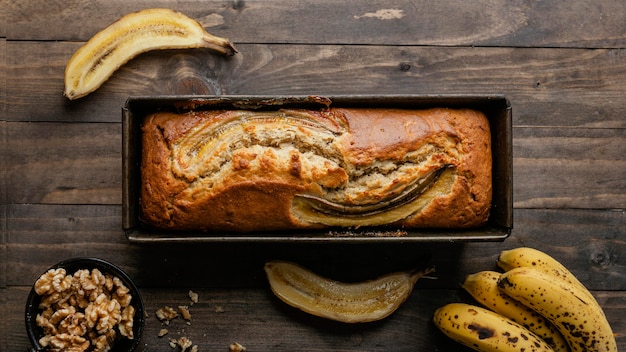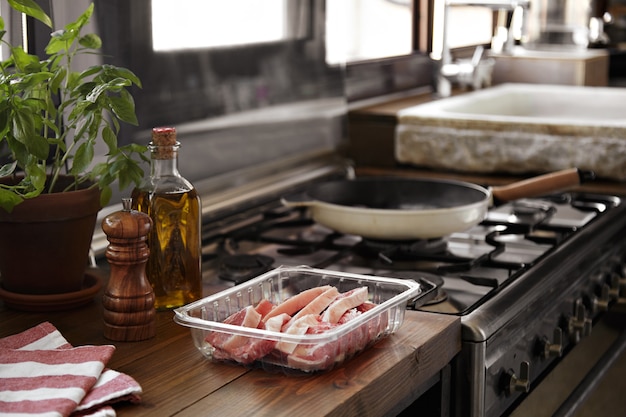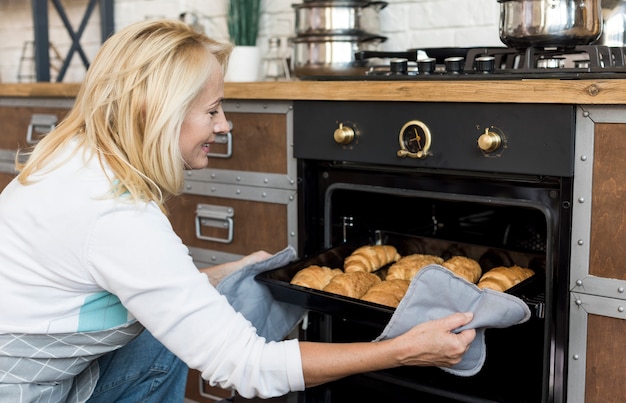As a seasoned cook, I've spent countless hours in the kitchen, experimenting with all sorts of recipes. But there's something special about a classic meatloaf. It's comforting, versatile, and always a crowd-pleaser. It's the kind of dish that brings people together, whether it's a family gathering or a simple weeknight dinner. Over the years, I've tried countless meatloaf recipes, from simple to elaborate, and learned a thing or two along the way. This guide is a culmination of my culinary adventures, a blueprint for achieving meatloaf perfection.
(Part 1) Choosing the Right Ingredients: The Foundation of Flavor

The foundation of any good meatloaf lies in the quality of its ingredients. This is where the magic truly begins. It's like building a house; you need strong, reliable materials to create a lasting structure. The same applies to meatloaf. Choose the right ingredients, and you'll be rewarded with a delicious, flavorful loaf.
1. Meat, Glorious Meat: A Symphony of Flavors
Let's get down to the basics: the meat. Traditionally, meatloaf is made with ground beef, but I like to add a bit of ground pork or veal for extra flavour and juiciness. It's like adding a little bit of spice to your life – it adds depth and complexity. Don't be afraid to experiment! You could even use a mixture of ground lamb, turkey, or chicken. Just ensure you use good quality, fresh meat. The type and ratio of meat will determine the final texture and flavour.
For example, I love using a mix of 80% lean ground beef and 20% ground pork. The beef provides the leanness, while the pork adds richness and moisture. But if you prefer a leaner meatloaf, you can use all ground beef. The key is to find a combination that suits your taste and dietary needs.
2. Breadcrumbs: The Secret Weapon
Breadcrumbs are not just filler; they play a crucial role in binding the meat mixture, ensuring a moist and well-structured loaf. Imagine them as the mortar in a brick wall, holding everything together. I've tried everything from plain white breadcrumbs to panko, even experimenting with seasoned breadcrumbs. Ultimately, the choice depends on your personal preference. I find that plain breadcrumbs create a more traditional texture, while panko adds a slight crunch.
If you're looking for a classic meatloaf texture, I recommend using plain white breadcrumbs. They absorb moisture and create a soft, comforting texture. However, if you want a bit of a crunch, panko breadcrumbs are the way to go. They are larger and lighter than traditional breadcrumbs, creating a crispy crust.
3. Veggies for a Flavor Boost: A Culinary Duet
Don’t underestimate the power of vegetables in a meatloaf! They not only add nutritional value but also contribute to the overall flavour profile. They add a touch of sweetness, acidity, and texture that elevates the meatloaf to a whole new level. Finely chopped onions, garlic, and celery are staples in my meatloaf mix. They melt into the meat as it bakes, creating a rich and complex taste.
The key is to finely chop the vegetables so they don't overpower the meat. I like to saute the onions and celery in a bit of butter before adding them to the mixture. This caramelizes the onions and adds a depth of flavour.
4. Eggs: The Binding Force: A Culinary Glue
Eggs act as a binder, helping the meatloaf hold its shape during baking. They're like the glue that holds the meatloaf together, preventing it from crumbling. Usually, one or two eggs are sufficient, but you can add more if you're using a large quantity of meat. The eggs also contribute to the moistness of the loaf.
I typically use two eggs for a standard-sized meatloaf. They provide enough binding power to hold the meatloaf together and create a tender, juicy texture.
5. Seasoning: Don’t Skimp on Flavor
Seasoning is paramount to a flavorful meatloaf. It's like adding a pinch of magic to your creation. Salt, pepper, and paprika are my go-to spices. But don’t be afraid to get creative! Use your favorite herbs and spices to personalize your meatloaf. Experiment with dried herbs like thyme, rosemary, or oregano. For a touch of sweetness, consider adding a sprinkle of brown sugar or maple syrup.
I always season my meatloaf with salt, pepper, and a generous pinch of paprika. The paprika adds a smoky depth of flavour that complements the meat perfectly. For a more herbaceous flavour, I sometimes add a teaspoon of dried thyme or rosemary.
(Part 2) Building the Perfect Meatloaf: A Culinary Symphony

Now that we've gathered all the ingredients, it's time to assemble our meatloaf masterpiece. This is where the magic of hands-on mixing and shaping comes into play. Think of it as composing a culinary symphony, where each ingredient plays its part to create a harmonious whole.
1. The Art of Mixing: A Gentle Touch
Gently combine all ingredients in a large bowl. Over-mixing can toughen the meatloaf, so aim for a consistent mixture without overworking it. Think of it as a delicate dance, bringing the ingredients together without disrupting their individual beauty. I prefer to use my hands for this task; it allows me to feel the texture and ensures the ingredients are evenly distributed.
Use a light touch when mixing the ingredients. You want to combine them evenly without overworking the meat. If you use your hands, be sure to wash them thoroughly before handling the meatloaf.
2. Shaping the Loaf: A Culinary Sculptor
Now for the shaping! Using your hands, gently form the meatloaf mixture into a loaf shape. I like to press it into a loaf pan, ensuring it fills the pan evenly. You can also form it freehand on a baking sheet, making sure it's about 2 inches high. Think of yourself as a culinary sculptor, giving the meatloaf a beautiful form.
When shaping the meatloaf, make sure it's evenly distributed in the pan or on the baking sheet. If you're using a loaf pan, lightly grease it with butter or cooking spray to prevent the meatloaf from sticking.
3. Adding a Glaze: A Finishing Touch
This is the fun part! A flavorful glaze enhances the appearance and taste of the meatloaf. It's like adding a final flourish to your artwork, bringing it to life. I usually go for a classic tomato-based glaze, but you can experiment with other options like honey-mustard or barbecue sauce. Spread the glaze evenly over the entire surface of the meatloaf.
For a classic tomato-based glaze, simply combine ketchup, brown sugar, and a touch of Worcestershire sauce. If you want a sweeter glaze, add a bit more brown sugar. For a tangy glaze, add a tablespoon of vinegar.
(Part 3) The Baking Process: Transforming the Ordinary

Now that our meatloaf is ready, it’s time to bake it to perfection. This is the crucial stage where we transform our mixture into a delicious, flavorful loaf. Think of it as a culinary alchemy, turning the raw ingredients into a masterpiece.
1. Preheat and Bake: The Heat of Creation
Preheat your oven to 350°F (175°C). Place the meatloaf in the oven and bake for about 1 hour and 15 minutes, or until the internal temperature reaches 160°F (71°C).
Ensure the oven is preheated to the correct temperature before placing the meatloaf in the oven. This ensures even baking and prevents the meatloaf from becoming dry.
2. The Importance of Temperature: Ensuring Perfection
Using a meat thermometer is essential for ensuring your meatloaf is cooked through. Think of it as a culinary compass, guiding you to the perfect level of doneness. Insert the thermometer into the thickest part of the loaf to measure the internal temperature. If the thermometer reads below 160°F (71°C), continue baking for a few more minutes.
It's important to check the internal temperature of the meatloaf to ensure it's cooked through. Undercooked meatloaf can be dangerous to eat. If the internal temperature is below 160°F (71°C), continue baking until it reaches that temperature.
3. Resting Time: A Moment of Relaxation
Once the meatloaf is cooked, allow it to rest for 10-15 minutes before slicing. This allows the juices to redistribute, ensuring a moist and flavorful slice. Think of it as giving the meatloaf a chance to relax and settle before being enjoyed.
Resting the meatloaf is crucial for preventing it from becoming dry. The juices will redistribute, resulting in a tender, juicy slice.
(Part 4) meatloaf variations: Beyond the Basics
Now that we've mastered the basic recipe, it’s time to unleash our creativity and explore some exciting meatloaf variations. It's like adding a new chapter to our culinary journey, expanding our horizons and discovering new flavors.
1. Savoury Flavour Combinations: A Culinary Adventure
- Mediterranean Delight: Add chopped sun-dried tomatoes, Kalamata olives, and crumbled feta cheese to the mixture for a Mediterranean twist. This variation will transport you to the sun-drenched shores of Greece, bringing a taste of the Mediterranean to your dinner table.
- cheesy goodness: Fold in shredded cheddar, mozzarella, or your favourite cheese for a cheesy and decadent meatloaf. This is a classic comfort food combination that will please any cheese lover.
- Spicy Kick: Add a pinch of cayenne pepper or chili flakes for a touch of heat. This variation will add a fiery kick to your meatloaf, perfect for those who enjoy a little spice.
- Mushroom Medley: Sauté chopped mushrooms with garlic and onions and incorporate them into the meatloaf for an earthy and flavorful addition. This variation will create a meatloaf that's bursting with umami flavor.
2. Sweet and Savory Blends: A Harmony of Flavors
- Apple-Sage Meatloaf: Mix diced apple and fresh sage into the meatloaf for a sweet and savory combination. The sweetness of the apple and the earthy aroma of the sage create a perfect balance of flavors.
- Cranberry-Walnut Meatloaf: Add chopped cranberries and walnuts for a festive twist. This variation is perfect for holiday gatherings or any time you want to add a touch of elegance to your meal.
- Apricot-Ginger Meatloaf: Mix in dried apricots and grated ginger for a sweet and spicy flavor profile. The dried apricots add a touch of sweetness, while the ginger adds a warming, spicy kick.
(Part 5) Serving Suggestions: Meatloaf Masterpieces
Now that your meatloaf is ready, it’s time to dress it up and make it a culinary star. Think of it as presenting your masterpiece on a stage, showcasing its beauty and flavor.
1. The Classic Pairing: A Timeless Combination
A simple and comforting combination is mashed potatoes and gravy. The creamy potatoes complement the savory meatloaf perfectly, while the gravy adds richness and flavour. It's a classic pairing that never disappoints.
2. A Touch of Elegance: A Culinary Symphony
For a more elegant presentation, serve the meatloaf with roasted vegetables, such as asparagus, Brussels sprouts, or carrots. The roasted vegetables provide a delightful contrast in texture and flavour. They add a touch of sophistication and color to your meal.
3. Salad Side: A Refreshing Counterpoint
A fresh salad adds a touch of lightness and freshness to the meal. Choose a simple green salad with a vinaigrette dressing or a more complex salad with roasted vegetables and herbs. It's a perfect way to balance the richness of the meatloaf and add a touch of healthy goodness to your meal.
(Part 6) meatloaf leftovers: The Ultimate Comfort Food
Meatloaf is a meal that's just as delicious the next day. It's a meal that keeps on giving. Here are some ideas for making the most of those leftover slices.
1. Meatloaf Sandwiches: A Culinary Classic
Slice the meatloaf and serve it on toasted bread with your favourite condiments, such as mayonnaise, mustard, or ketchup. It's a quick and easy way to enjoy the leftovers, perfect for a busy weeknight.
2. Meatloaf Salad: A Delicious Twist
Dice the meatloaf and toss it with chopped vegetables, such as celery, onions, and peppers. Add a dressing of your choice, such as mayonnaise, ranch, or vinaigrette. It's a light and refreshing way to enjoy the leftovers, perfect for a summer lunch.
3. Meatloaf Pasta Bake: A Comforting Indulgence
Slice the meatloaf and layer it in a baking dish with pasta, sauce, and cheese. Bake until the cheese is melted and bubbly. It's a hearty and comforting dish that's perfect for a cold winter night.
(Part 7) Tips and Tricks: Meatloaf Mastery
Over the years, I've picked up a few tricks of the trade that have helped me create the perfect meatloaf. These are the secrets to my success, the little things that make all the difference.
1. The Importance of Binding: A Culinary Foundation
Ensure you use enough breadcrumbs and eggs to bind the meatloaf mixture. This will prevent the meatloaf from crumbling and ensure a cohesive structure. It's like building a strong foundation for your meatloaf, ensuring it holds its shape and stays intact.
2. Don't Over-Mix: A Gentle Touch
Over-mixing can toughen the meatloaf. Gently combine the ingredients until they are just mixed. Think of it as a delicate dance, bringing the ingredients together without overworking the meat.
3. Temperature Check: A Culinary Compass
Always use a meat thermometer to ensure the meatloaf is cooked through to 160°F (71°C). It's like a culinary compass, guiding you to the perfect level of doneness.
4. Rest Before Slicing: A Moment of Relaxation
Allow the meatloaf to rest for 10-15 minutes after baking before slicing. This will allow the juices to redistribute and prevent the meatloaf from becoming dry. Think of it as giving the meatloaf a chance to relax and settle before being enjoyed.
(Part 8) FAQs: Your Meatloaf Questions Answered
I know you might have some burning questions about making the perfect meatloaf. Here are answers to some common queries.
1. Can I Use a Different Type of Breadcrumbs?
Yes, you can use different types of breadcrumbs. Panko breadcrumbs will create a crispier crust, while plain white breadcrumbs will create a more traditional texture. It's all about finding the texture that suits your taste preferences.
2. What Can I Add to My Meatloaf?
The possibilities are endless! You can add chopped vegetables, cheese, herbs, spices, and even fruits like cranberries or apples. Let your imagination run wild and create your own unique meatloaf masterpiece.
3. What Happens If My Meatloaf Is Overcooked?
If your meatloaf is overcooked, it will become dry and tough. Try to avoid overcooking by using a meat thermometer and checking the internal temperature. The key is to bake it to perfection, not overbake it.
4. How Can I Keep My Meatloaf Moist?
Use a combination of breadcrumbs, eggs, and moisture-rich ingredients, like chopped vegetables, to ensure a moist meatloaf. You can also add a bit of milk or broth to the mixture. The trick is to find the right balance of ingredients to create a tender, juicy meatloaf.
5. Can I Freeze Meatloaf?
Yes, you can freeze cooked meatloaf. Wrap it tightly in plastic wrap and then aluminum foil. It will keep for up to 3 months in the freezer. freezing meatloaf is a great way to save time and have a quick and easy meal on hand.
I hope this guide helps you on your journey to meatloaf mastery. Remember, the key to a delicious meatloaf is to experiment and find what works best for you. So put on your apron, gather your ingredients, and get ready to create a culinary masterpiece!
Everyone is watching

Corn on the Cob: The Ultimate Guide to Perfectly Cooked Ears
Healthy MealsAh, corn on the cob. Just the name evokes images of sunny days, barbecues, and that sweet, juicy flavour that ...

Scallops: The Ultimate Guide to Perfect Cooking
Healthy MealsAh, scallops. Those delicate, sweet, and utterly delicious morsels of the sea. They hold a special place in my...

Spaghetti Squash: The Ultimate Guide to Cooking and Serving
Healthy MealsRemember that time you saw spaghetti squash at the supermarket, looking all bumpy and strange, and thought, "W...

Salmon Cooking Times: Perfect Guide for Every Recipe
Healthy MealsLet me tell you, cooking salmon is an art form. It's all about getting that perfect balance: juicy and tender,...

Ham Cooking Time: How Long to Bake, Smoke, or Boil a Delicious Ham
Healthy MealsAh, ham. It's a classic, isn't it? A real crowd-pleaser, especially around holidays. And when done right, it'...
